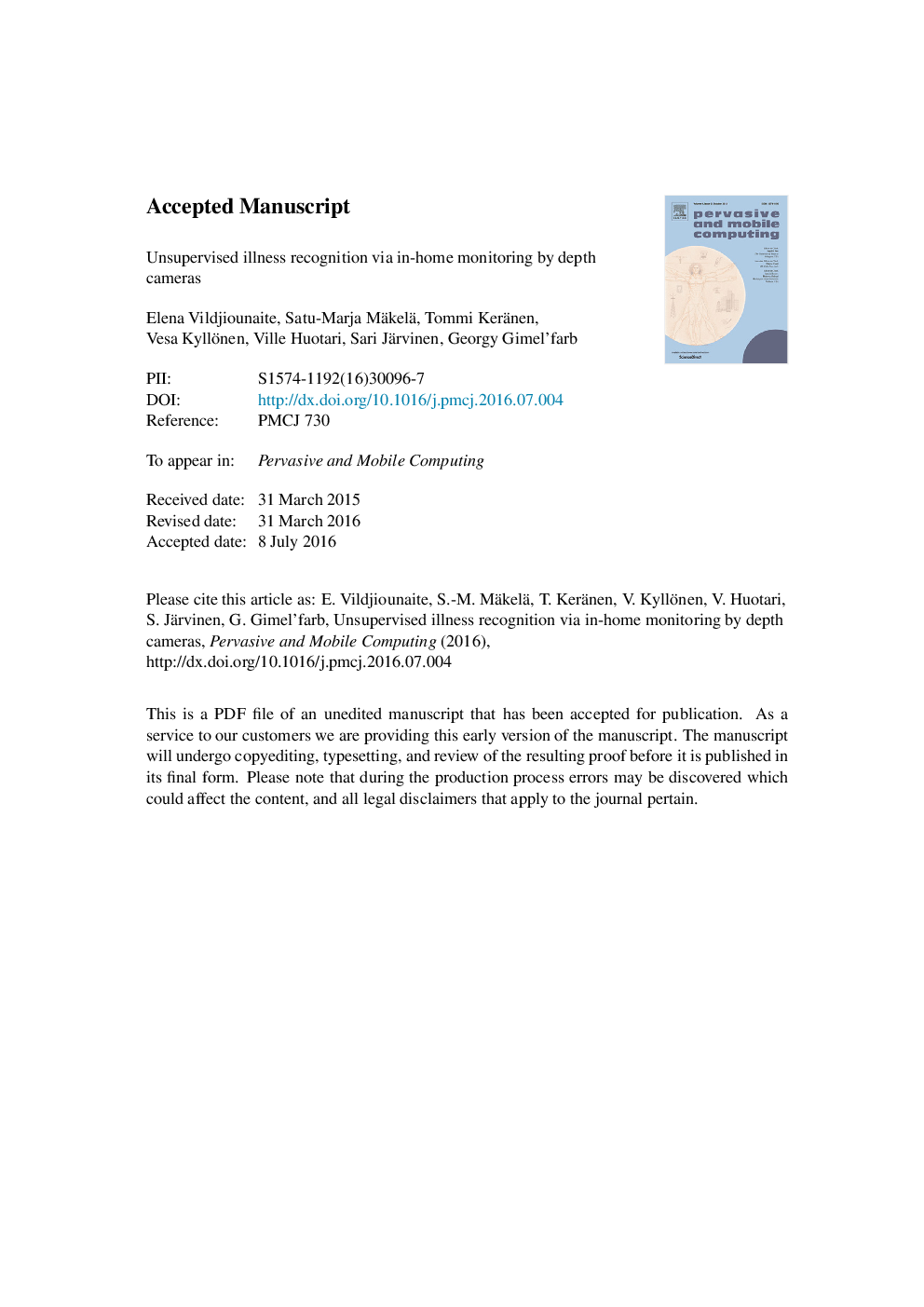| Article ID | Journal | Published Year | Pages | File Type |
|---|---|---|---|---|
| 4957470 | Pervasive and Mobile Computing | 2017 | 25 Pages |
Abstract
Most of today's in-home systems for detecting illness in the elderly meet with the same limitations: they target only single occupancy apartments, although couples may need support, too, and, faced with monitored subjects who are not necessarily regular in their everyday life, they tend to classify even slight deviations from standard routines (e.g. cooking a meal one hour later than usual) as anomalies. The training data used for anomaly detectors typically include only days when the subject is alone and not sick, whereas in practice it is difficult to obtain day labels, i.e. information on whether the elderly subject had visitors or felt well or unwell. In addition, as every room in the apartment to be monitored is usually equipped with passive infrared motion detectors, the maintaining of such systems may be inconvenient for the residents. To address these problems, this paper proposes a new probabilistic illness detector which does not rely on regular daily routines and requires no data labelling. The detector was tested in apartments inhabited by single elderly subjects or couples, and in all cases only the living rooms and corridors were monitored, with no invasion into the more private spaces. Despite its fully unsupervised training on data covering both normal and unusual days (days of illness, visits by other people, etc.), the proposed detector distinguished between normal days and illnesses with an average accuracy of 88% and did not misclassify the receptions of guests as anomalies.
Related Topics
Physical Sciences and Engineering
Computer Science
Computer Networks and Communications
Authors
Elena Vildjiounaite, Satu-Marja Mäkelä, Tommi Keränen, Vesa Kyllönen, Ville Huotari, Sari Järvinen, Georgy Gimel'farb,
